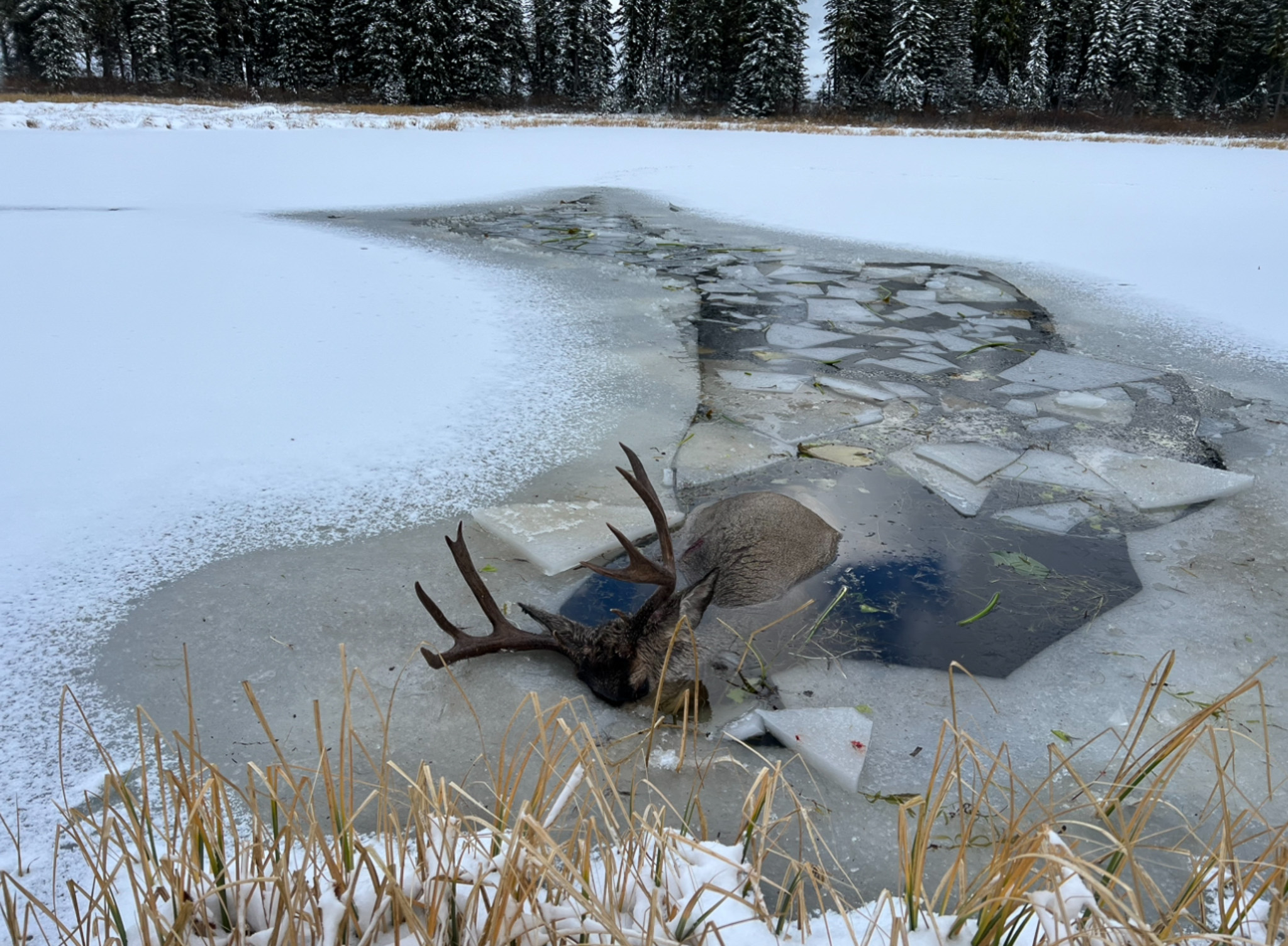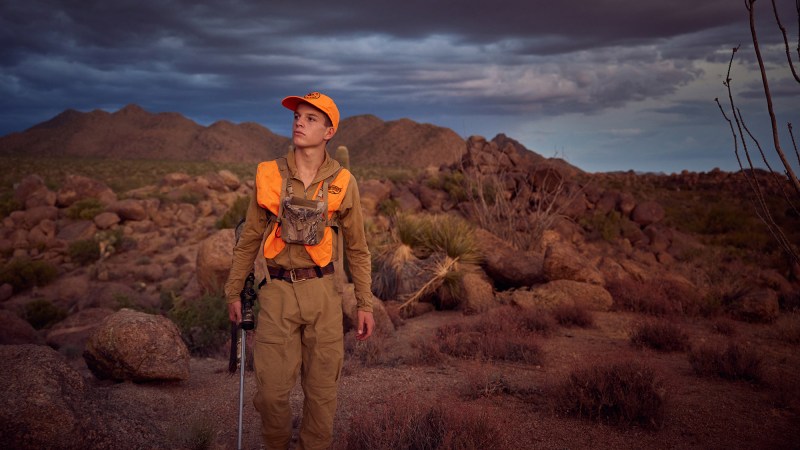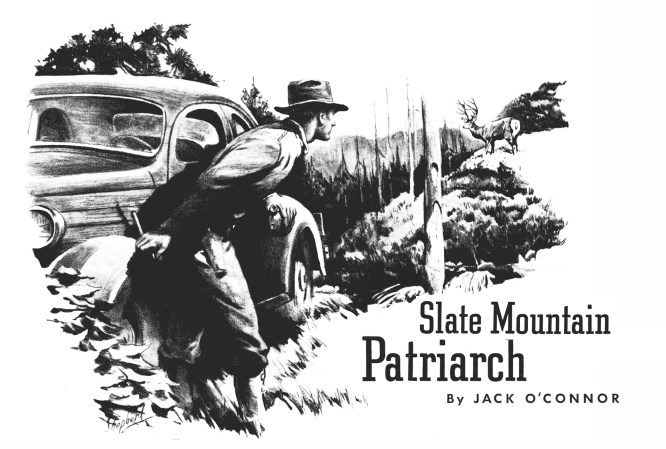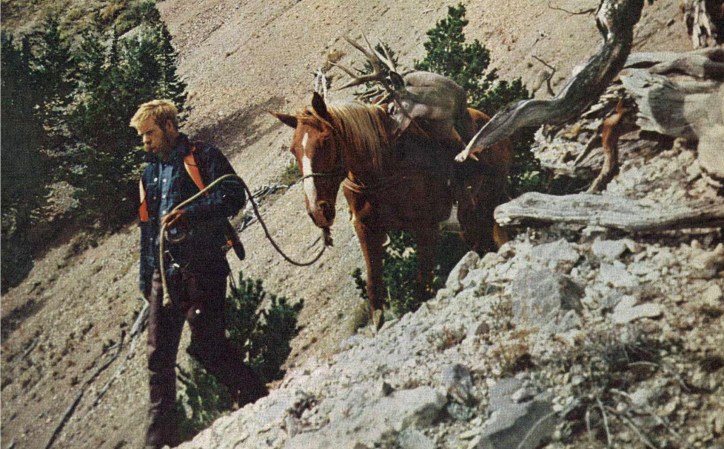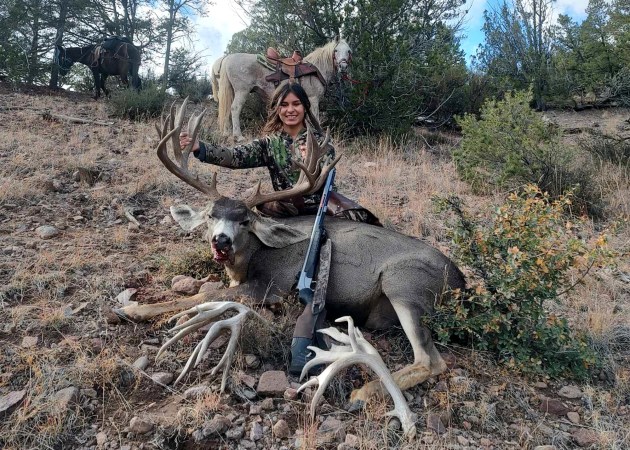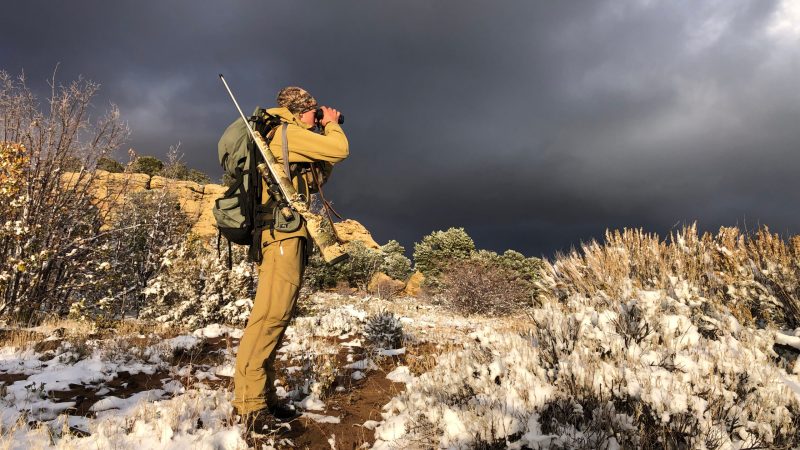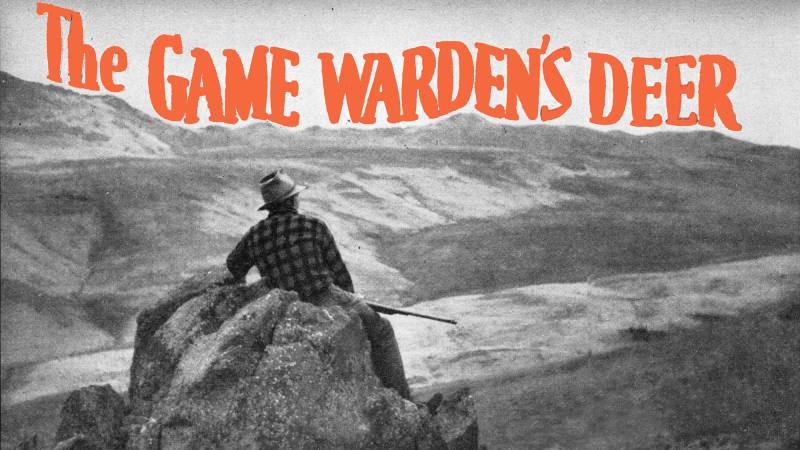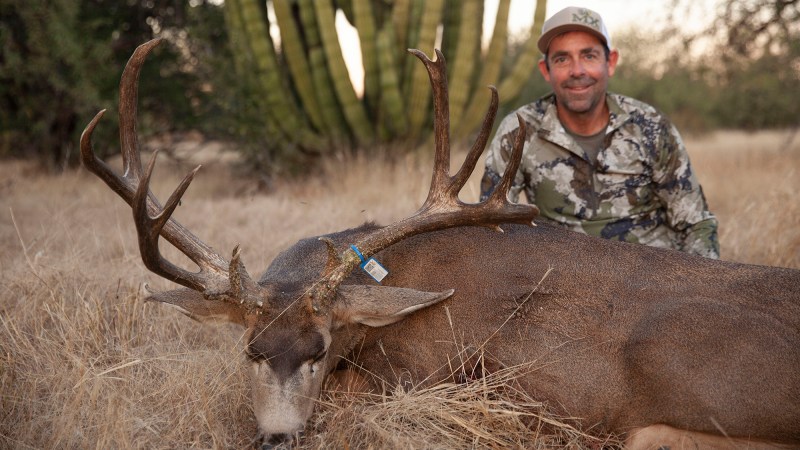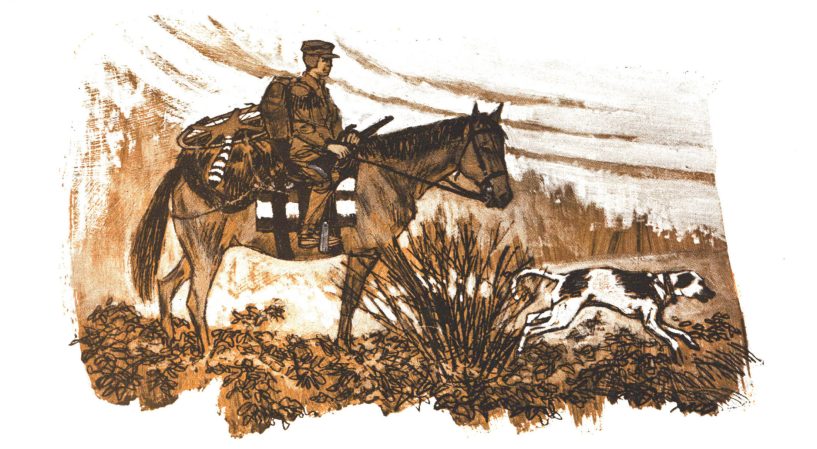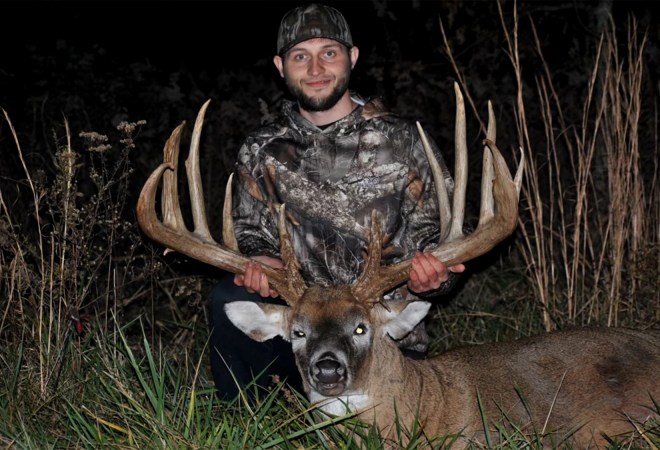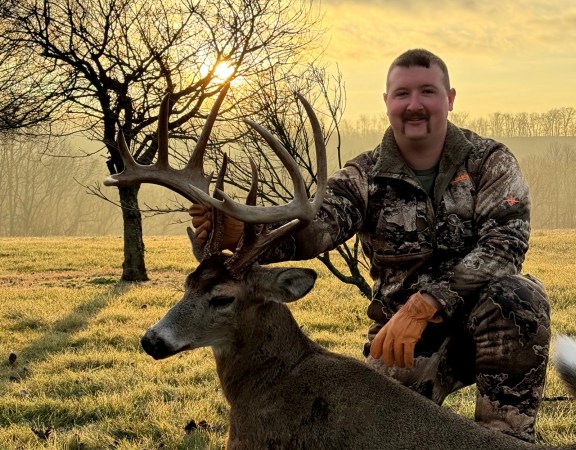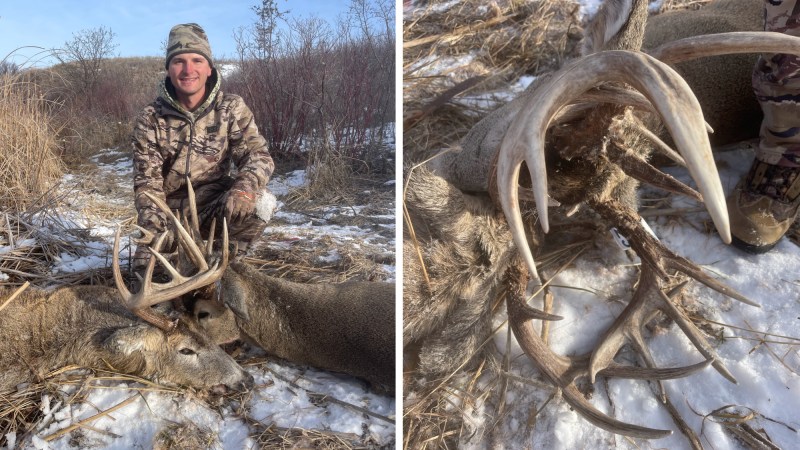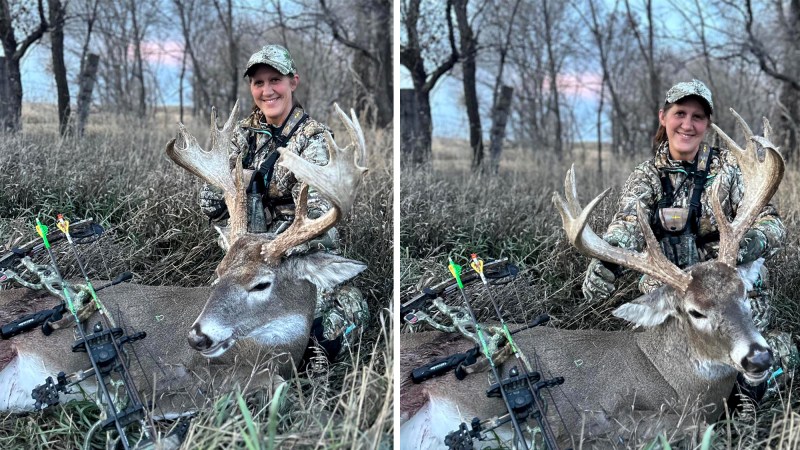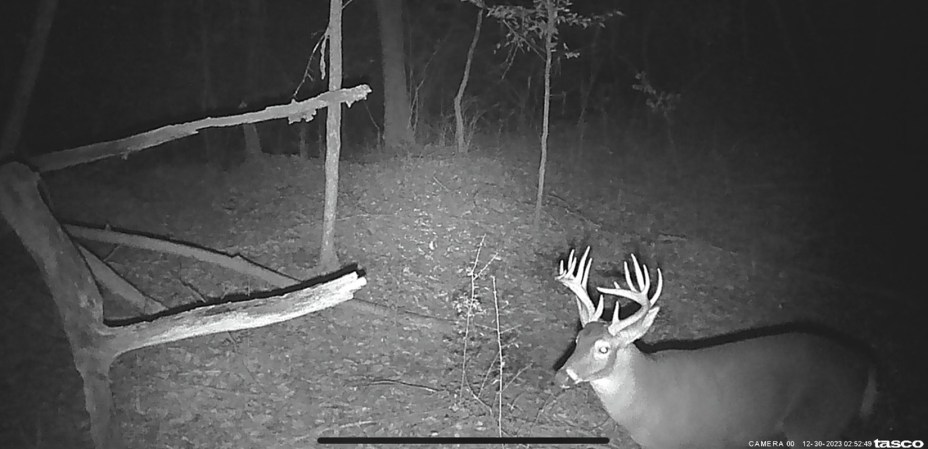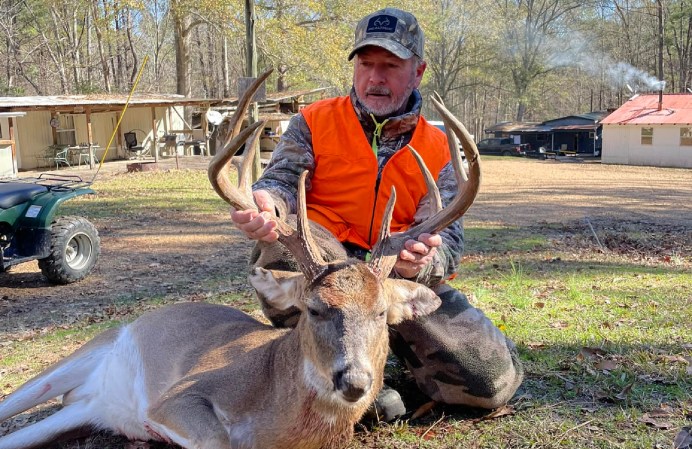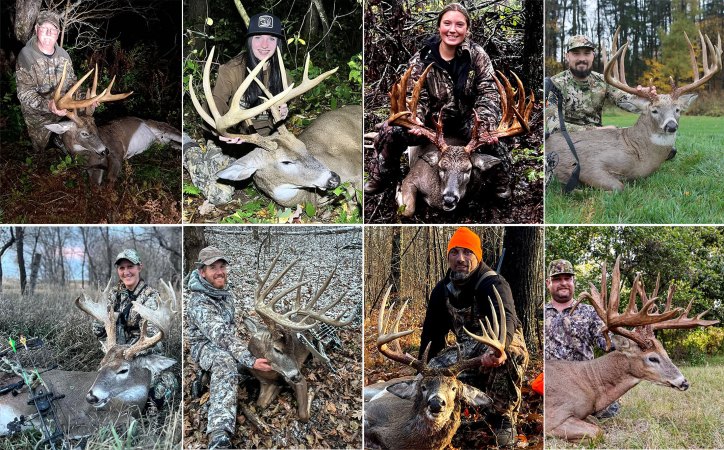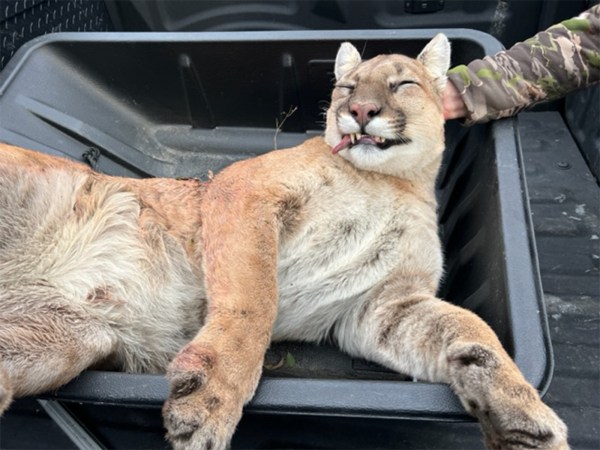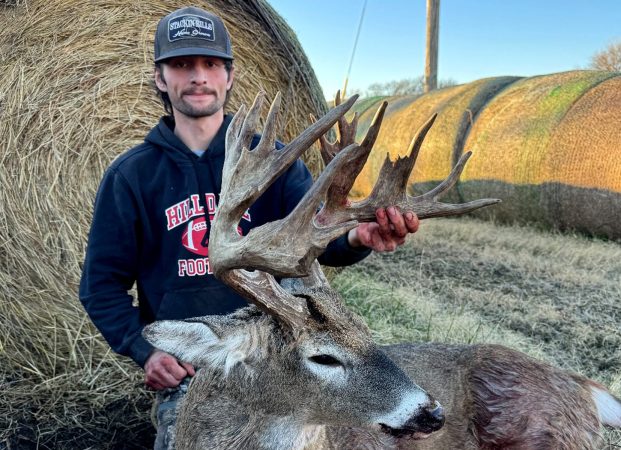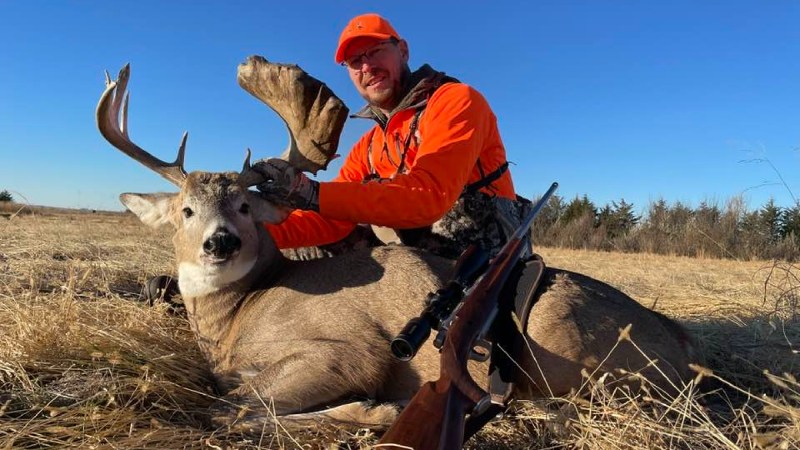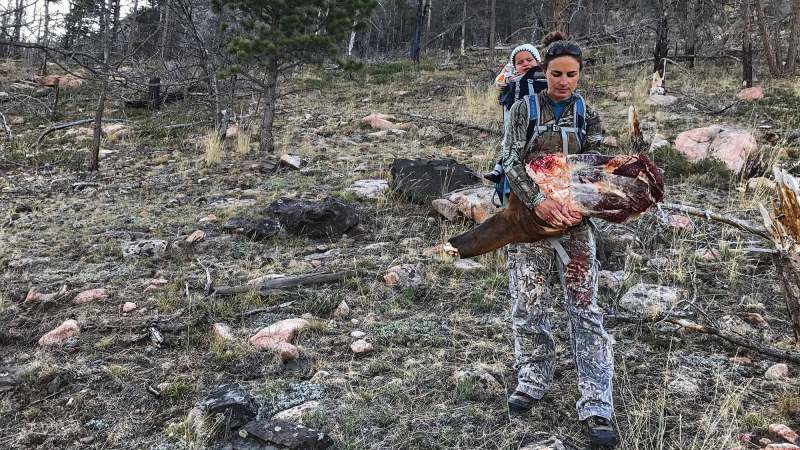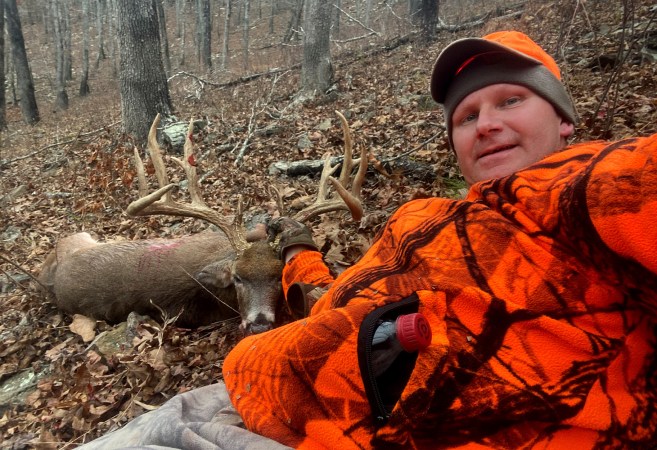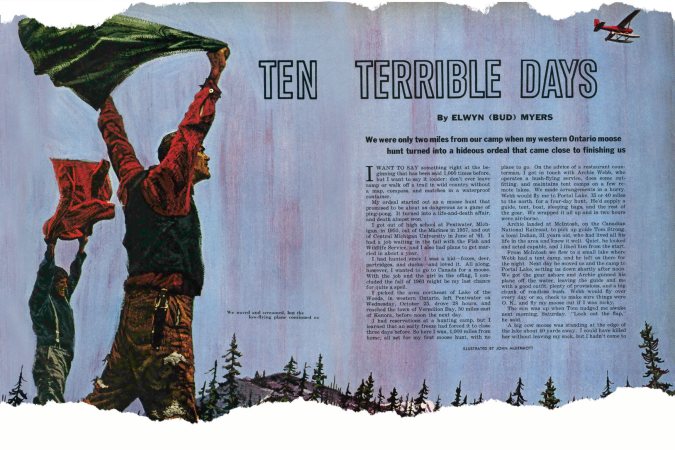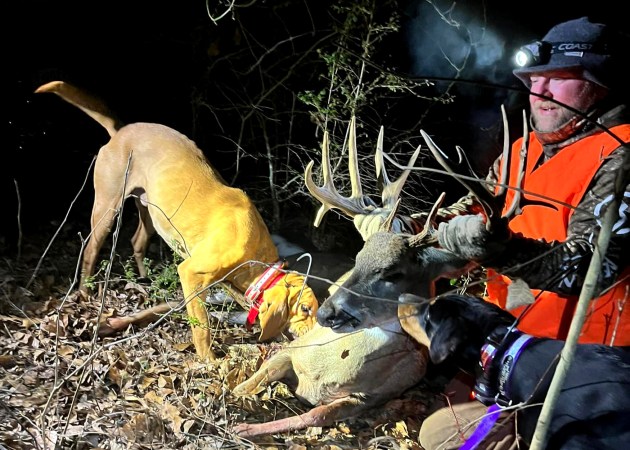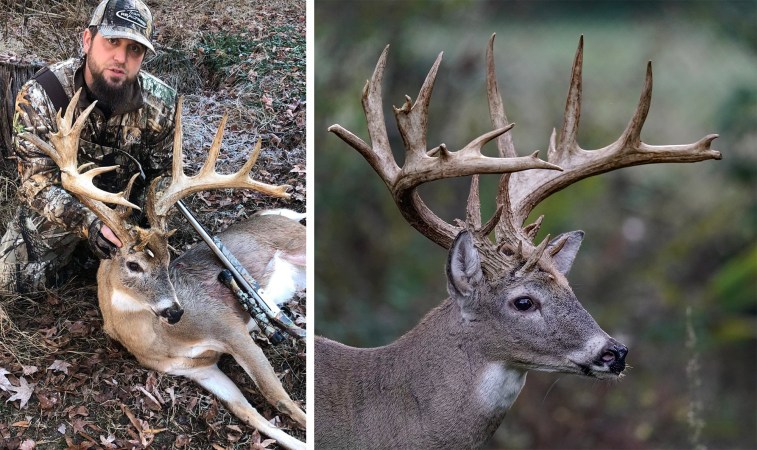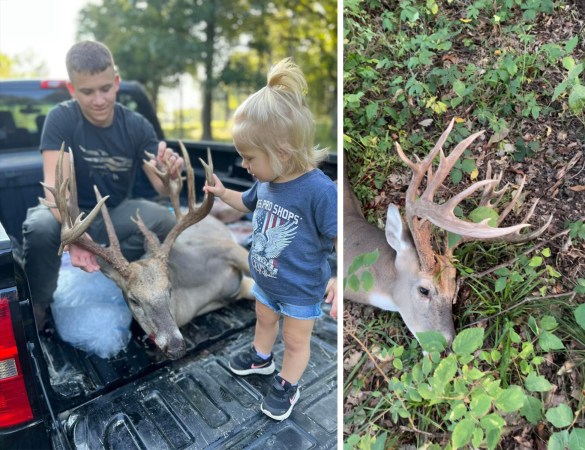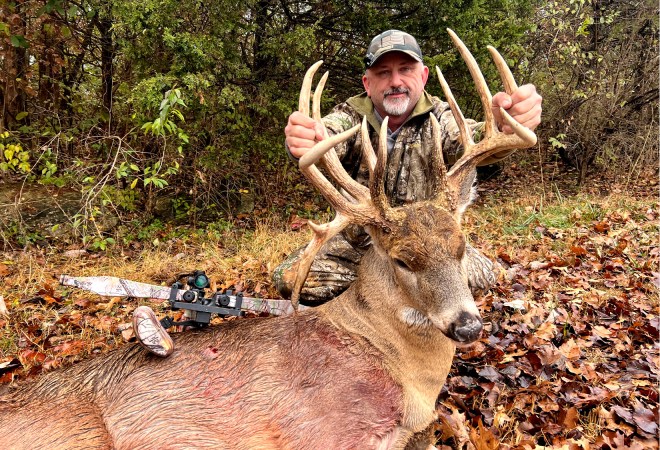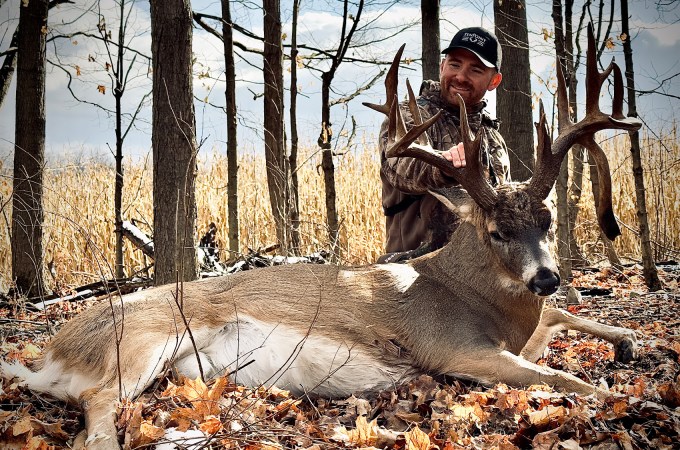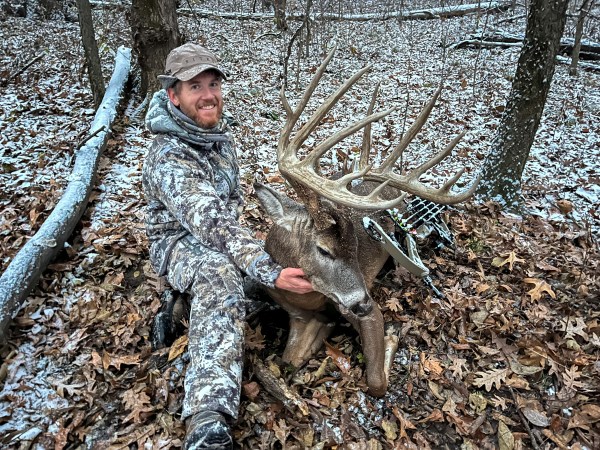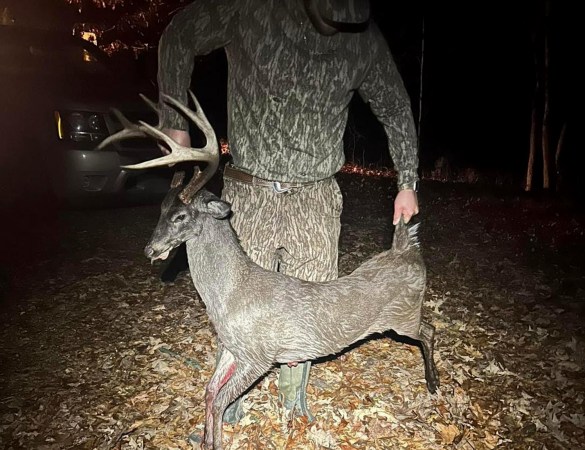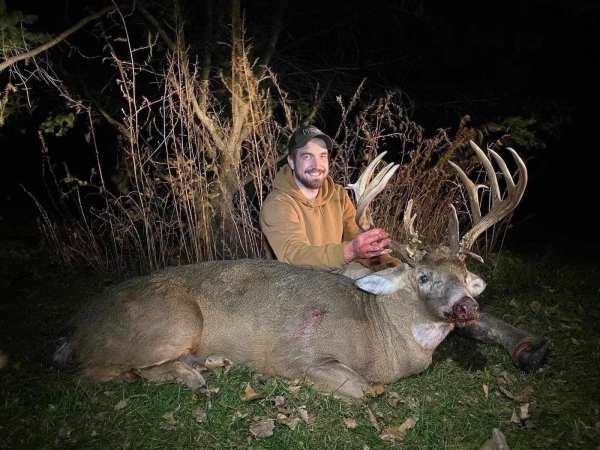It occurred to me that I might be a lousy friend as I turned uphill, abandoning my buddy Ed to shiver it out alone at our agreed-upon meeting place way off on the opposite side of the drainage. The willow-choked ridge above me was pockmarked with the first fresh mule deer tracks I’d seen in miles of churning through this ankle-twisting hellscape of the Idaho mountains. For every craggy brown rock that pimpled up through the snow there were 50 more hidden below — all threatening to send me careening sideways with every step. I followed the tracks upward, scanning the patchwork of evergreens and open glades as I went.
The buck was standing high up on an open bench when I poked my head into a clearing. There was a line of snow-laden ponderosas between us that I’d hoped would provide some cover, but he caught movement and bounded away before I could set up. Under different circumstances I would have taken that moment to kick myself for blowing it, but the late afternoon sun was still well above the frosty peaks and fresh snow means second chances. I was certain I’d be able to track him down.
It had only taken him a heartbeat to top the ridge, so I took advantage of the terrain’s cover and broke into a run. Too fast, it turned out. I hadn’t made it more than 20 yards before I face-planted into the powdery hillside with the kind of silent thud that must’ve looked right out of a Charlie Chaplin flick. I gave myself a quick dusting and checked that there was no snow plugging the barrel of my Tikka, then climbed at a more deliberate pace and hunched low at the crest. There was no trouble finding his course where he had hurried toward the tree line. No longer in a rush, I trailed on.
I caught sight of his legs before I saw the rest of him, ambling through a field 200 yards away. The smattering of drooping firs between us obscured his eyes and I dropped prone to click my bipod into place.
The initial zing of seeing him for the first time had worn off in the chase and my breath was calm as I looked him over. He was a good one: 4×4, thick-beamed antlers that were walnut-dark, with kickers protruding like gnarled antennae. Exactly what I was looking for. I watched him take another step, solitary and alert in the center of that open glade, my finger still well away from the trigger. Then I watched him disappear.
I blinked, and looked again.
Did he just fall into a hole?
I stared, puzzled, at the vacant landscape. Then in a blur a dark-antlered head came rocketing back up from below the ground into which it had just vanished, breaking through slabs of what I now recognized as ice.
There was a layer of snow on the frozen lake in front of me that I had just mistaken for a field. Despite frigid temperatures, that must have been enough insulation to keep the crust from thickening to a safe depth. The deer had just reached the rotten center when I came up on him.
The buck was a frantic wrecking ball of hoof and antler as he smashed a trail towards the far bank. Every attempt to climb out of the water ended in the snap of cracking ice and a gray body sliding back into the turbid slush. But all that commotion was pushing him, half heaving and half swimming, ever closer to the far shore.
I kept him in the scope, dazzled by what I was seeing but confident I could get a good shot when he made dry land. Onward he went. Crack. Splash. Scrape. Twenty yards from bank. Ten. Four. Four. Four yards, and no further.
From the even way he held his head, he looked to be standing on the bed of the lake with his full body below the neck still immersed in freezing water. The chaotic chorus of splintering ice was gone, replaced in a flash by the deadened silence of the snowy mountains around us.
Too thick, I realized.
Whether he was still too deep in the water to get enough upward momentum or whether the lake muck kept sucking his back legs down, he couldn’t summon enough energy to break through the ice that had grown ever thicker the closer he got to shore.
I waited in that eerie silence and watched him for a long time, the wind swirling softly as the sun traced west toward the jagged horizon. Every couple of minutes a flurry would erupt. He was still trying to escape, throwing his forelegs onto the ice shelf and clambering for purchase before slinking back down again in the wake of another failed effort. But soon his breaks were getting longer and longer, and I eventually realized the inevitable: He was going to freeze to death.
I wasn’t in love with the idea of shooting a deer in this kind of trapped extremis. I recalled an old story about hunters who had driven a herd of elk into a deep snow drift in order to kill them, and how that hunt was used in a hunter education class as an example of a classic violation of fair chase. But if I took myself out of this particular situation, I wondered how the buck would fare. Not well, I concluded. I eventually let my finger move toward the trigger and the next time the buck launched his body upward, I fired.
Retrieving a Half-Submerged Deer
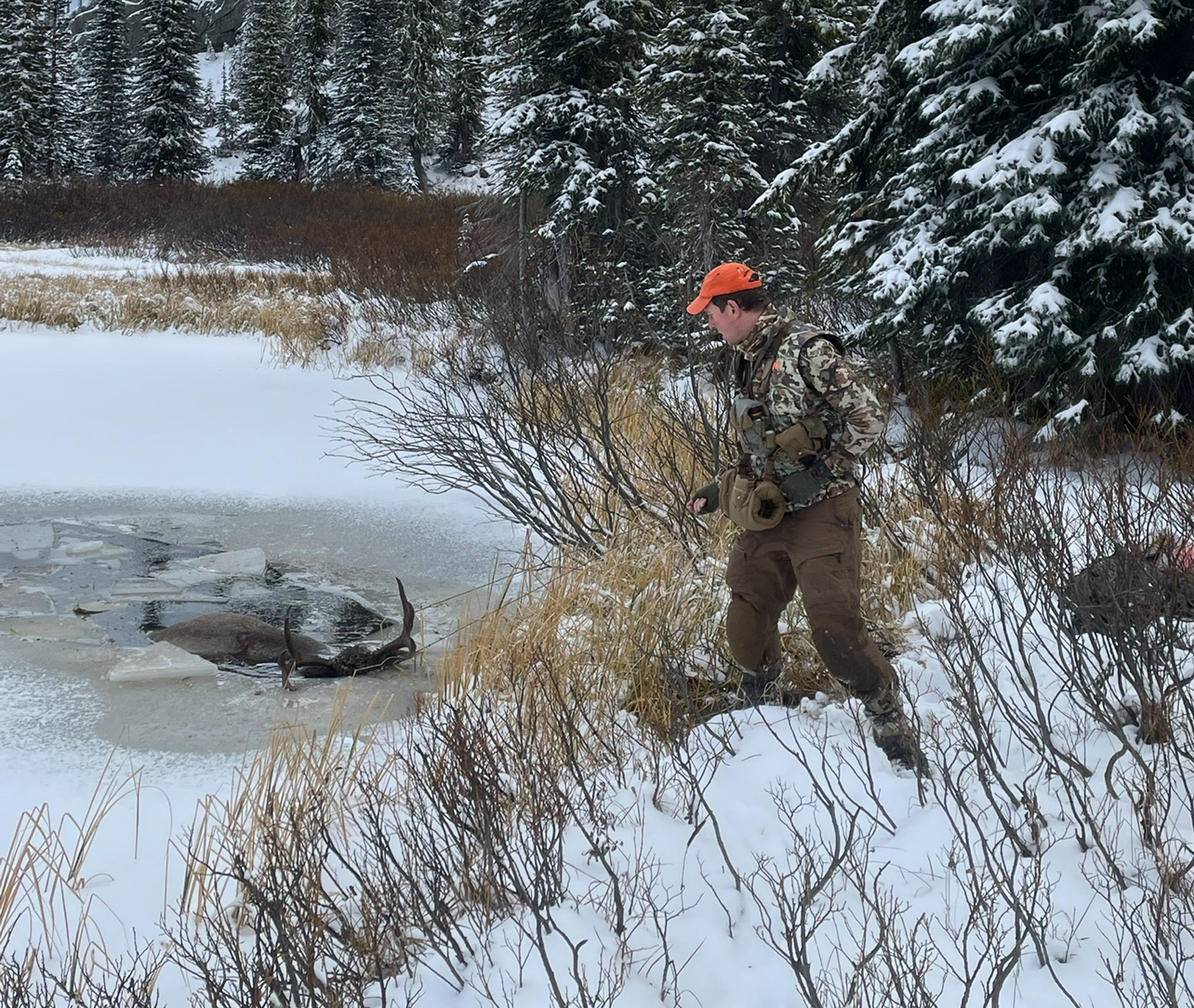
Photo by Ed Rebman
The retrieval was going to be a mess. I had assumed the reeds that circled the shore were on dry land, but the soft crunch of snow gave way to the cracking of ice before I reached them and I was up to my boot tops in watery slush much sooner than I’d hoped. The dead buck was stuck fast, his snout buried firm under the ice shelf. I had nothing strong enough to break the thickening ice and he was locked in there tight enough that my attempt to lasso his antlers with paracord and haul him up did nothing more than cut rope burns into my hands and waist.
“Well,” Ed said as he walked up, guided by the sound of rifle fire, “I’ll help you carry it out — but I’m not going swimming.”
I nodded in resignation. Time to go in after him. I debated taking off my boots, but the serrated ice floating like daggers all around made me think better of it.
“We’ll get a fire to warm me up afterwards,” I said hopefully as I stepped in.
The ice broke beneath my feet and the muck below sucked at my boots as I moved, the water rushing into my gaiters and climbing higher as I tried to keep as much of my body above the water as possible. I was up to my waist by the time I reached the buck’s antler, already frozen and slick and hard to hold onto.
I pressed my hands against the ice, slicing my knuckles in the process but cracking through the slabs that the buck hadn’t been able to free himself of. He may have been the more powerful animal, but I was in shallower water. Being two-legged and six feet tall has its advantages.
The deer was more mobile once the ice was free and I turned to haul him backward, but the bobbing chunks of ice offered no purchase and the puckering slime grabbed my ankles. I had only made it a few feet before feeling a flash of panic as a chunk of submerged ice trapped my foot and sent me tumbling halfway under. Another half yard in the wrong direction and I would have plunged headlong down. But Ed’s outstretched hand was just within reach and I grabbed hold before I fully submerged, leaning forward as he pulled up and shimmying the last couple of yards onto some semblance of solid land.
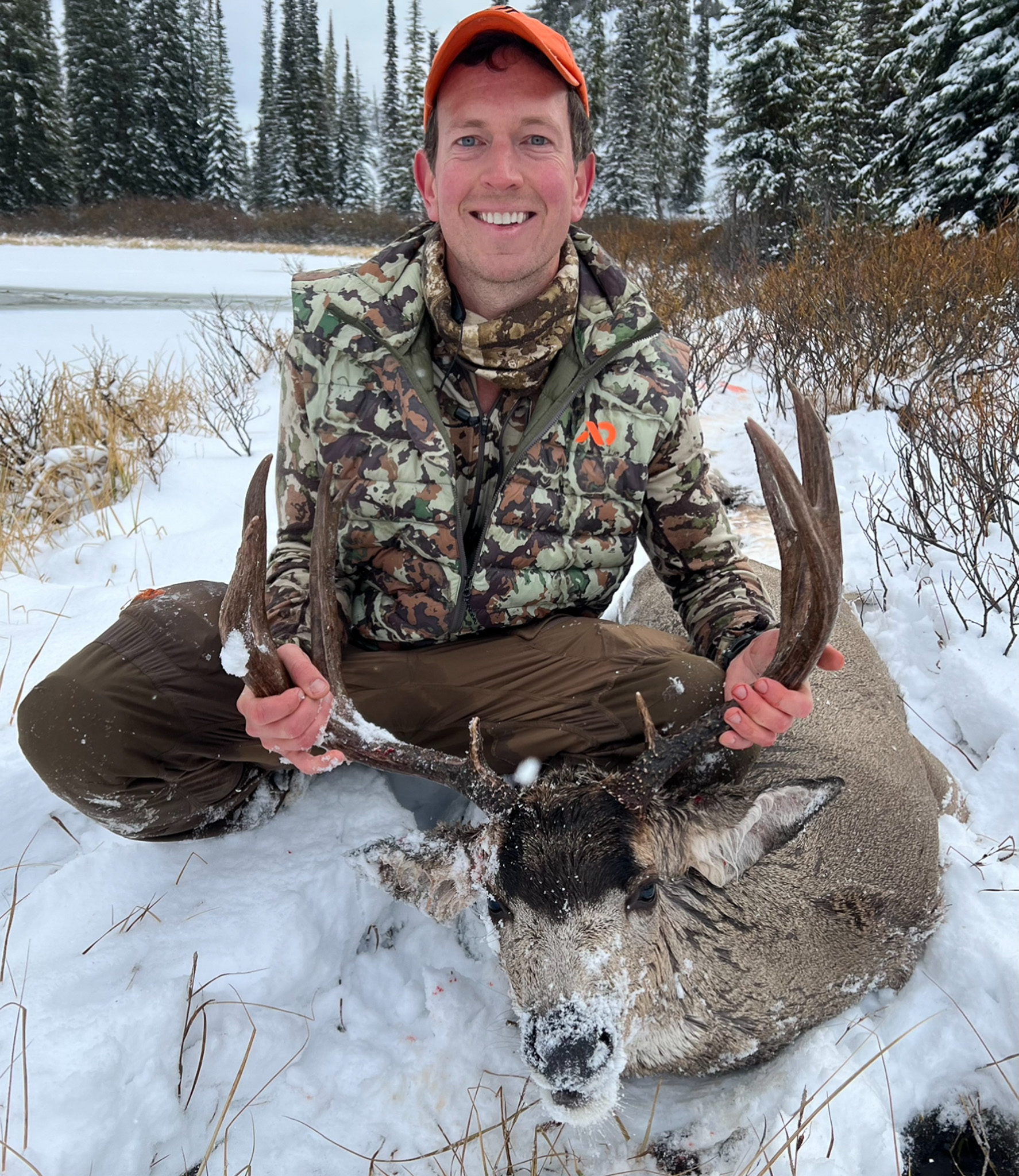
Photo by Ed Rebman
I mumbled my thanks to Ed as I knelt on the bank and breathed warm air onto my raw fingers, taking a moment to admire the deer before my eyes turned upward to the landscape. The white world around us was beautiful in the failing light but barren and damp and growing steadily colder. The sleeves of my shirt and everything below my belly was soaked through and already starting to stiffen as it froze. I hadn’t felt my feet since stepping in the water.
“It’s your call,” Ed said, “but it’s not going to be very easy to make a fire around here.”
Ed is the kind of organized and resourceful guy who doesn’t have to bother telling you he had been an Eagle Scout, and I couldn’t help but agree with his assessment. After a short debate we decided to make the best use of the daylight we had left and pack out as quickly as we could. We raced the sun to get all the meat into game bags, my hands nimble enough to hold a knife but numb enough that the clumsy cuts I made to my fingers barely registered. Soon enough we were loaded up and on our way.
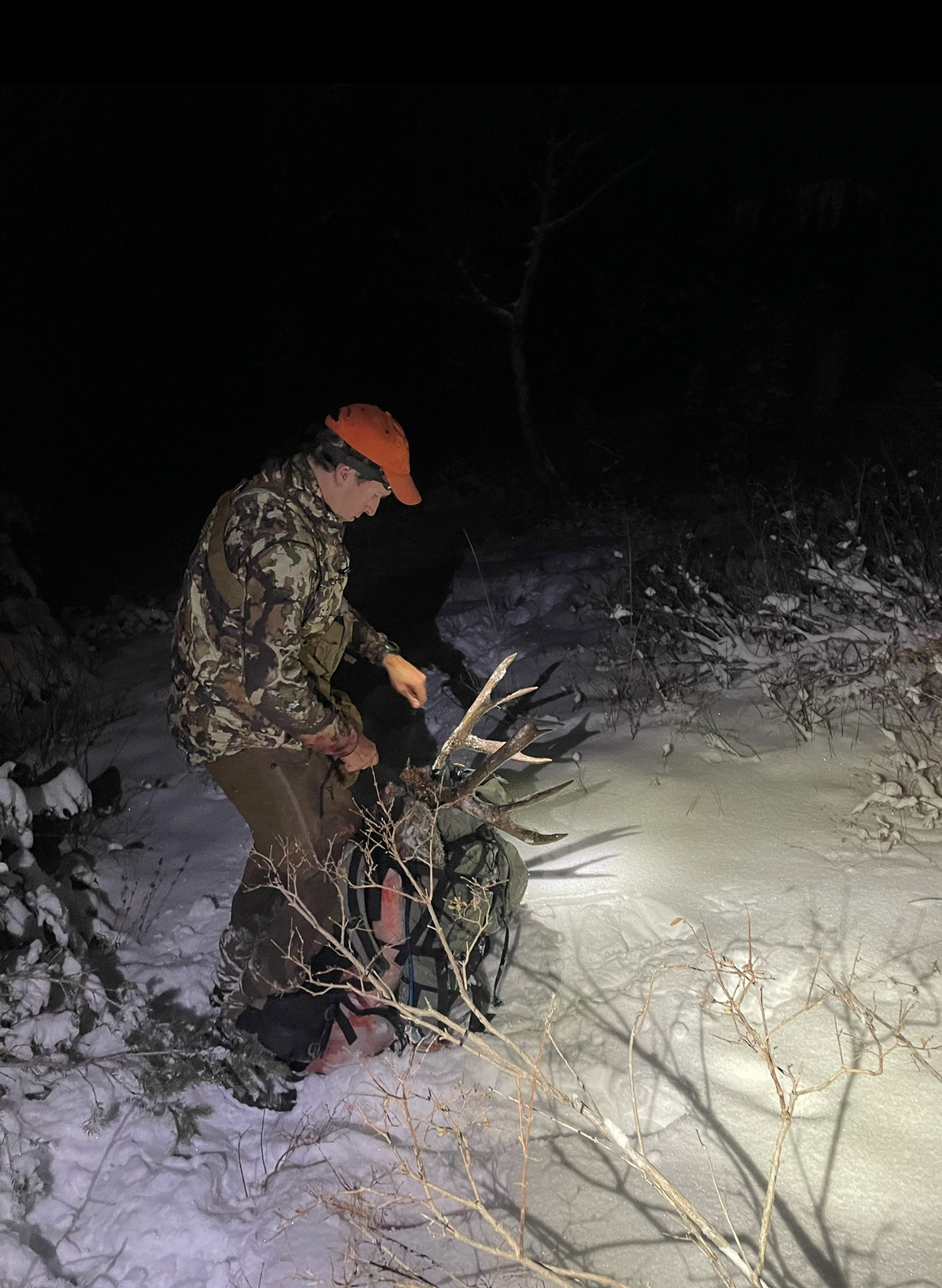
Photo by Ed Rebman
There are downsides to a long packout over rough terrain in the dark. But one thing it has going for it is that hard work means heat. We hiked with our heads down, following the boot tracks we had made hiking in that morning, and by the second mile I could start to feel the comforting pain of blood returning to my thawing toes. Fear of frostbite fading, we hiked to the faint crackle of my frozen clothes. Somewhere up the mountain, that shallow pond was already starting to freeze over again.
“It Happens”
This was the first time I had seen an animal misjudge the safety of a frozen lake, and it ran counter to my general assumption that deer are so mythically in tune with their natural world that a mistake like that would be next to impossible. While not exactly an everyday occurrence, the best answer I got from the deer biologist I spoke with afterward was, “It happens.” A fall over a cliff or through ice is particularly possible if an animal has been pushed or are otherwise distracted, as was doubtless the case with my buck. There are even reports of bull elk coming to grief in this way mid-fight, their focus so fully on their rival that both crash through ice into the frigid depths with their antlers still locked together.
Read Next: Best Mule Deer Calibers
So, it happens. Maybe not often, but in this case things definitely could have gone worse. It was no picnic to be drenched in sub-20 degree weather and miles from the trailhead, but that wasn’t much compared to the pickle I would have been in if I had fired a hair faster while that deer was still standing tall and dry and far from shore on that treacherous surface. So the next time I come across a big buck in a snowy meadow, I’ll still check his antlers — but I’ll also check his feet.
